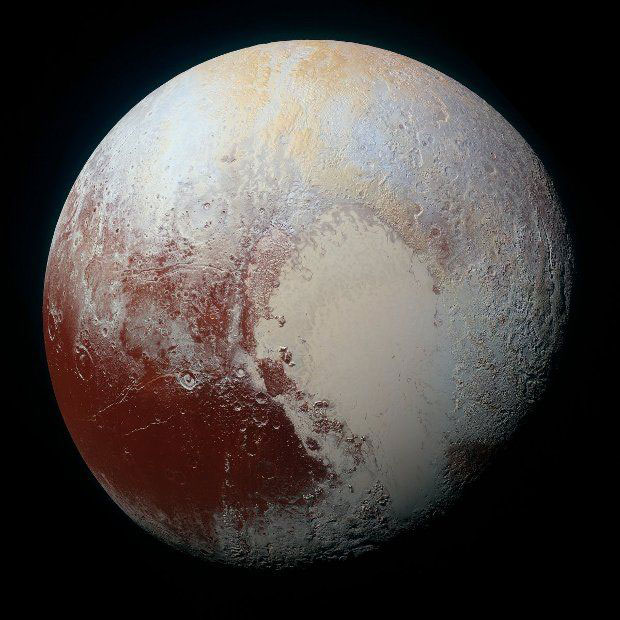New Horizons probe, currently traveling in the remote area of Pluto, book new information about this star still mysterious. His photographs have intrigued researchers after new analyzes are increasingly convinced that lakes and rivers nitrogen existed, there are hundreds of thousands of years.

New Horizons, the discovery of objects in the Kuiper belt.
the New Horizons spacecraft mission to explore a little-known region of the solar system, the Kuiper belt. Launched by NASA, its main objective is to study the dwarf planet Pluto and its satellites and then to head to another body of the Kuiper Belt. There are high expectations surrounding his analysis because the celestial body of this region of our solar system are so remote that the best telescopes have trouble watching.
Pluto was flown in 2015 and analysis of different shots sent by the probe reveals an unknown and surprising world. Clues suggest that lakes and rivers have existed on the surface of the dwarf planet.
Pluto, a mysterious planet with lakes and rivers

this is at least conclude that further analysis. Researchers today are strengthened in their intuition. There would have been, there are hundreds of thousands of years in lakes and rivers of nitrogen on the surface of Pluto. The first beam index dates back to October 2015, following receipt of photographs taken by New Horizons. They reveal strange formations on the surface of the star. For some, here there was food for thought that this was betraying the presence of lakes and rivers.
This hypothesis is now confirmed with new data from a modeling of climate history. All indications are that there are 900 000 years, the lakes and rivers of nitrogen were present. To understand the process, Alan Stern, the head of the mission News Horizon says
“Our modeling shows that the pressure could be 1,000 to 10,000 times higher in the past “
the image of the planet Earth, Pluto is inclined star. The angle of inclination is not stable over the long term. On Earth, it ranges from a more or less degree scale of millions of years for Pluto however we would talk about tens of degrees of variation with all the consequences that this could involve such an abrupt change of climate and high variations in pressure. We know that if the pressure reaches a certain value, nitrogen liquefies.
Pluto, the confines of our solar system.
Our solar system is divided into three distinct areas. From the Sun we have the inner planets Mercury, Venus, Earth or Mars and the gaseous planets like Jupiter and Saturnes finally said objects “trans-Neptunian” at a distance of between 30 and 50 AU from the Sun (AU is a unit away. it represents the average distance between the Earth and the sun about 150 million kilometers).
Pluto is part of the trans-Neptunian objects which together form the Kuiper belt.
No comments:
Post a Comment